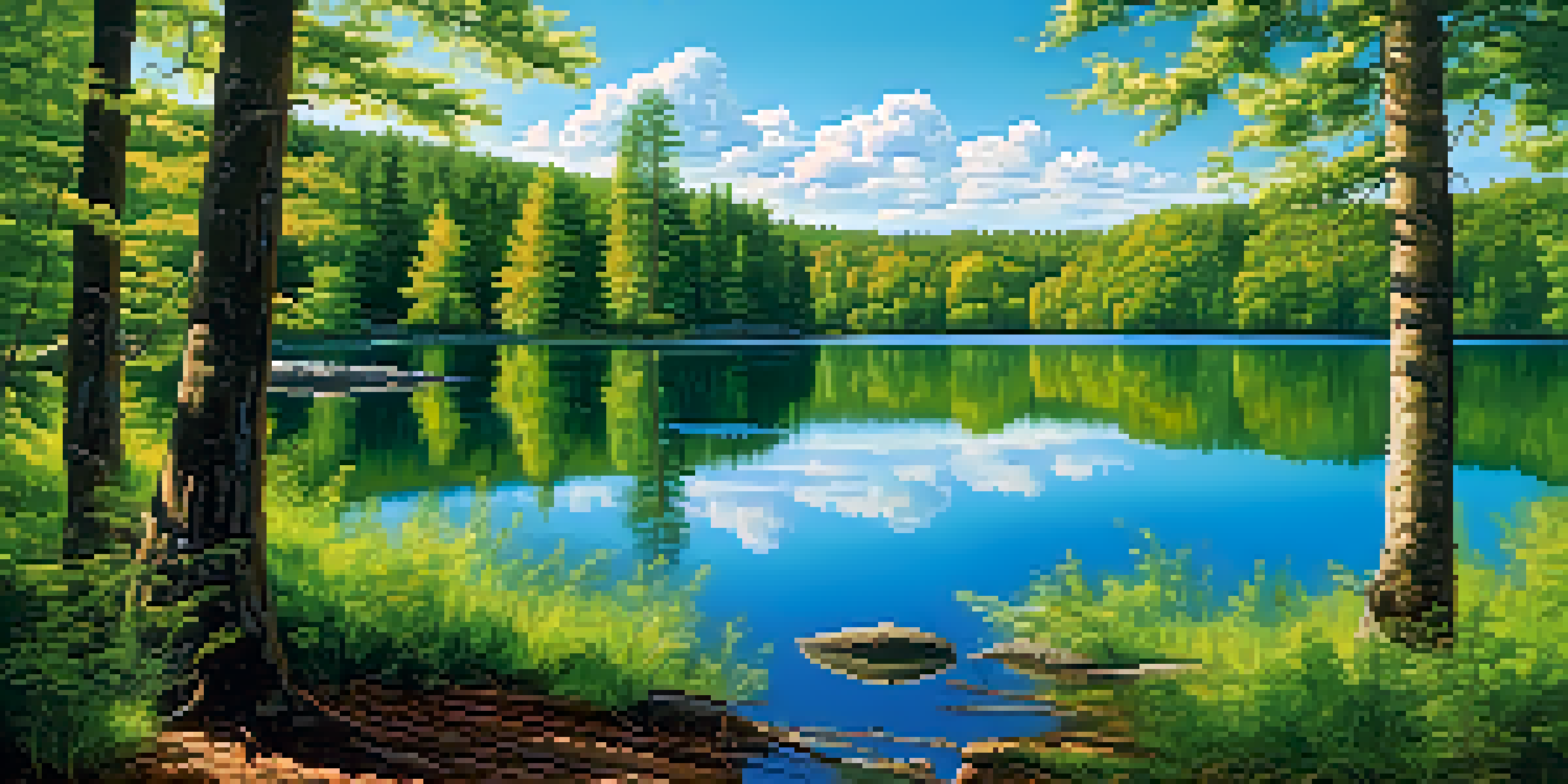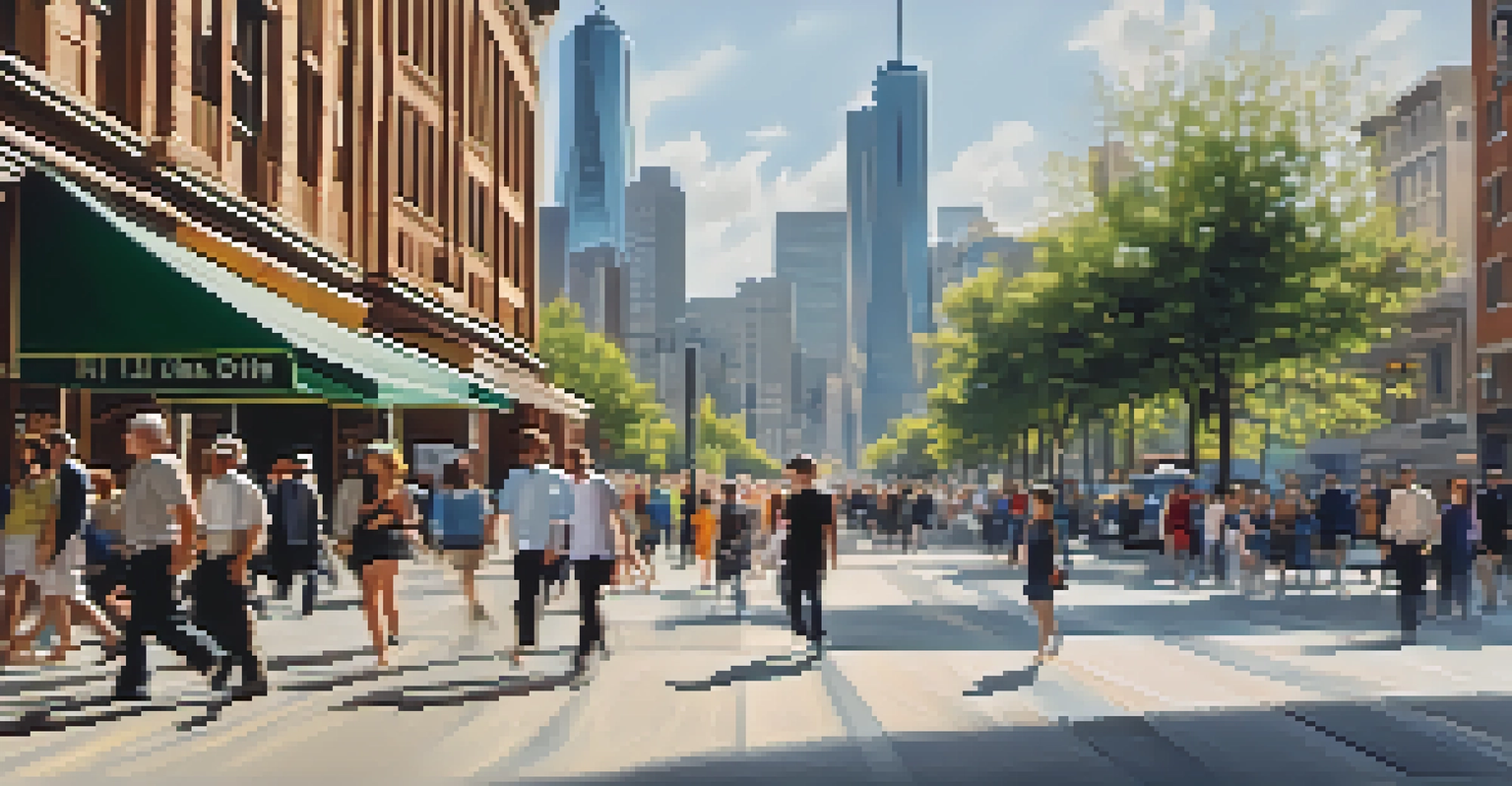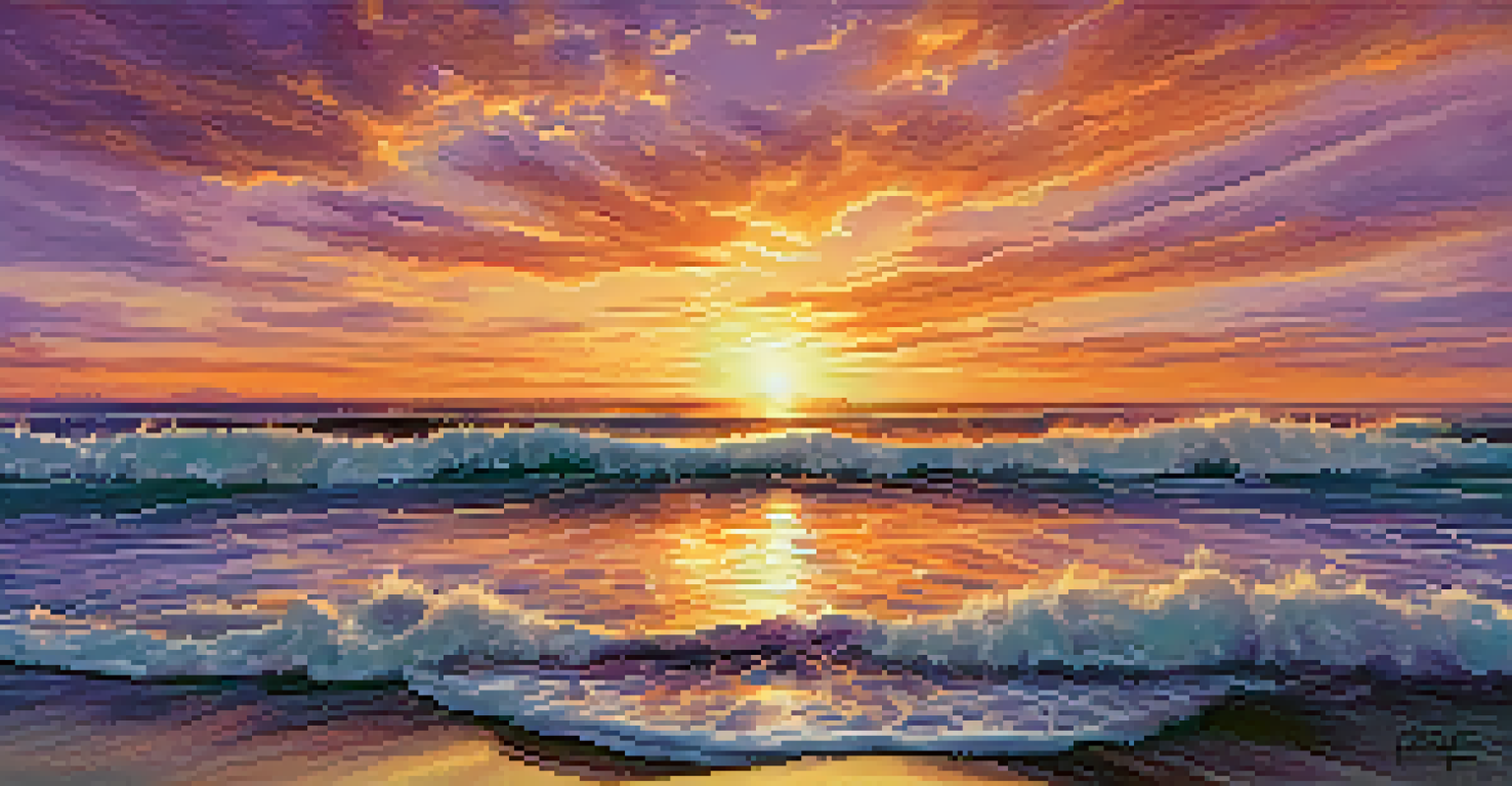Using Filters to Enhance Your Travel Photography Experience

Understanding the Basics of Photography Filters
Photography filters are tools that attach to your camera lens to modify the light entering the camera. They can enhance colors, reduce glare, or create special effects. Think of them as sunglasses for your camera, helping to manage the way light interacts with your images.
Photography is the story I fail to put into words.
There are several types of filters, including polarizing, ND (neutral density), and UV filters, each serving a unique purpose. For instance, a polarizing filter can make skies bluer and reduce reflections on water surfaces. Understanding these basics will help you choose the right filter for your travel photography needs.
Using filters not only enhances the quality of your photos but can also save you time in post-processing. By getting the colors and contrasts right in-camera, you spend less time editing later, allowing you to focus more on your travel experiences.
Benefits of Using Polarizing Filters
Polarizing filters are incredibly popular among travel photographers for good reason. They work wonders in enhancing the colors of the sky and foliage, making them appear more vibrant and saturated. Imagine standing in a lush green forest; a polarizing filter can help those greens pop in your photos.

Additionally, these filters help reduce glare from reflective surfaces, like water or glass. This means you can capture beautiful reflections on lakes without unwanted brightness washing out the image. It's like having a magic wand that clears the view for stunning shots!
Enhance Photos with Filters
Photography filters can significantly improve image quality by enhancing colors and reducing glare.
Using a polarizing filter can also improve contrast in your images, making clouds stand out against the sky. This simple addition to your gear can elevate your travel photography, allowing you to capture those breathtaking landscapes just as you see them.
Exploring Neutral Density (ND) Filters
Neutral density filters are a game changer for photographers who want to manage exposure without altering colors. They come in various strengths, allowing you to reduce the amount of light entering the lens while keeping the colors intact. Think of it as a dimmer switch for your camera.
The camera is an instrument that teaches people how to see without a camera.
These filters are particularly useful for long exposure shots, such as waterfalls or busy streets. By using an ND filter, you can create smooth, silky water effects or capture the movement of people as a blur, adding a sense of motion to your images. It opens up a whole new world of creative possibilities!
If you're planning to shoot in bright sunlight, an ND filter can help you use wider apertures for that lovely background blur, even in harsh lighting conditions. Embracing ND filters can significantly enhance your travel photography, allowing you to explore new techniques.
How UV Filters Protect Your Lens
UV filters are often seen as a protective measure for camera lenses, but they can also serve a functional purpose. While modern cameras have built-in UV protection, these filters help reduce haze and improve clarity in certain conditions. Think of them as a shield against potential scratches or smudges.
When traveling, you might find yourself in dusty or unpredictable environments. A UV filter can protect your expensive lens from dirt, water, and other elements that could damage it. This added layer of protection gives you peace of mind, letting you focus on capturing those unforgettable moments.
Polarizing Filters for Vibrancy
Using polarizing filters can make skies and foliage more vibrant while minimizing reflections.
While some photographers debate their necessity, having a UV filter on your lens can be a smart move, especially when exploring the great outdoors. It's a simple addition that can keep your gear safe while enhancing your overall photography experience.
Creative Effects with Specialized Filters
Specialized filters, like star filters or color filters, can add unique effects to your travel photography. Star filters create a starburst effect around light sources, perfect for capturing evening city scenes or bright stars in the sky. They add a touch of magic to your photos, making them stand out.
Color filters, on the other hand, can change the mood of your images dramatically. For example, warming filters can give your sunset shots a golden hue, while cooling filters can enhance the blues in a winter landscape. These filters allow for creative expression, turning an ordinary photo into something extraordinary.
Experimenting with specialized filters can lead to unexpected and delightful results. Don’t be afraid to play around with them during your travels; you might discover a unique style that becomes your signature look in photography.
Mastering Filter Techniques for Best Results
Once you've chosen the right filters, mastering how to use them effectively is key. Start by experimenting with different angles and lighting conditions to see how the filter affects your images. The more you practice, the more intuitive your filter use will become.
Remember to adjust your camera settings accordingly when using filters. For instance, when using an ND filter, you may need to increase your exposure time or adjust your ISO settings to achieve the desired effect. Keeping these adjustments in mind helps you get the best results.
Protect Your Lens with UV Filters
UV filters provide an extra layer of protection for your lens against scratches and environmental elements.
Don't shy away from shooting in various conditions with your filters. Each environment offers its own challenges and opportunities, allowing you to learn and grow as a photographer. Embrace the journey, and soon you'll find yourself capturing stunning images effortlessly.
Choosing the Right Filters for Your Travel Gear
When it comes to selecting filters, compatibility with your camera gear is crucial. Make sure to choose filters that fit your lens size and type. Most filters come in standard sizes, but it's always best to check before making a purchase.
Consider investing in high-quality filters, as they can significantly impact the overall quality of your photos. Cheaper filters might cause unwanted distortions or color casts that could ruin your shots. Think of it as an investment in your photography journey—a good filter can last for years and improve your image quality.

Lastly, don't feel like you need every type of filter in your bag. Start with one or two that align with your photography style and gradually expand your collection as you gain confidence and experience. This way, you can build a tailored kit that enhances your travel photography without overwhelming you.
Tips for Using Filters While Traveling
When traveling, it's essential to pack your filters wisely. Consider using a filter pouch or case to protect them from scratches and damage. Keeping your filters organized ensures that you can easily access them when the perfect photo opportunity arises.
Be mindful of the lighting conditions you encounter during your travels. Sometimes, the best shots happen in unexpected moments, like during sunrise or sunset. Having your filters ready allows you to adapt quickly and capture those fleeting moments beautifully.
Lastly, don't forget to have fun with your filters! Travel photography is all about capturing memories and experiences. Use your filters creatively, and let them help tell the story of your travels in a visually stunning way.